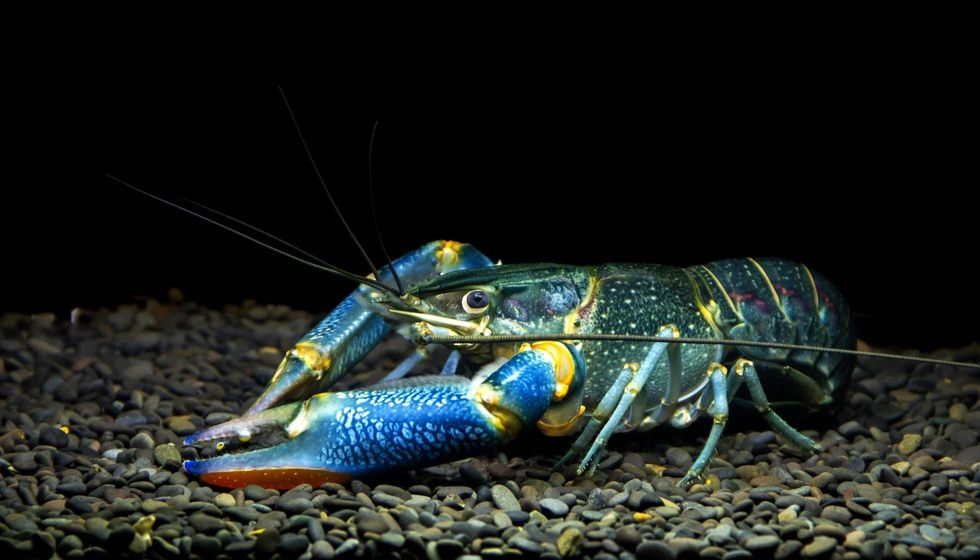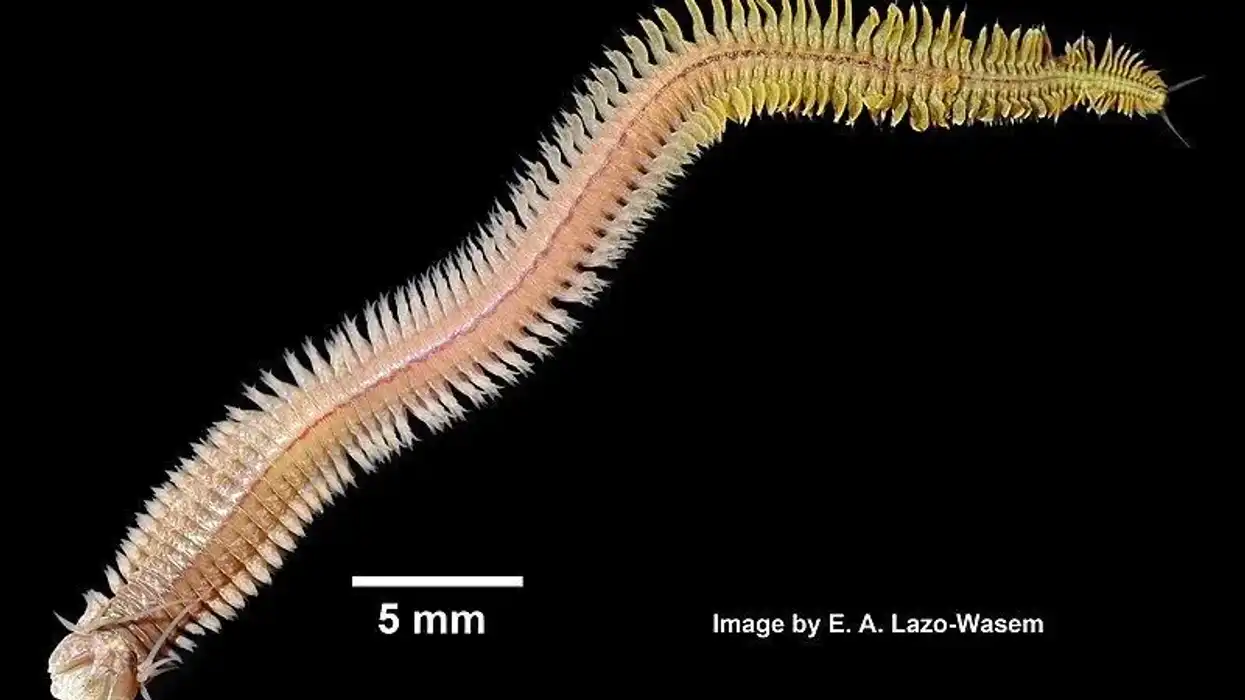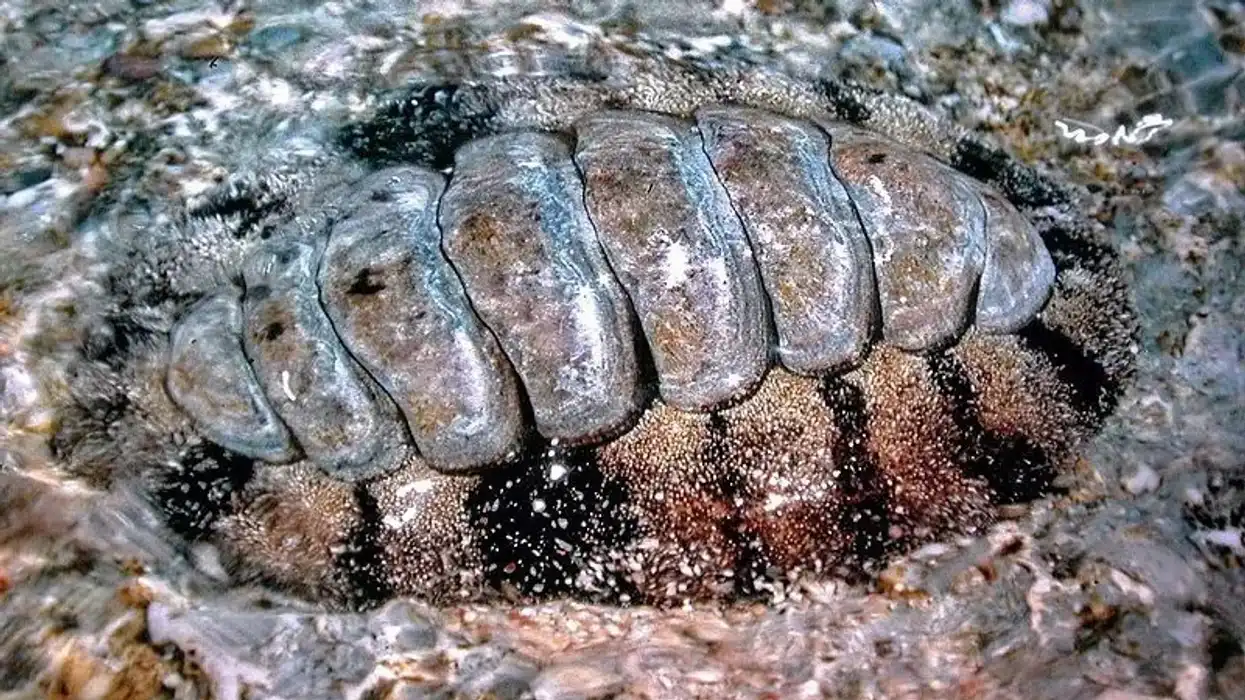The redclaw crayfish (Cherax quadricarinatus) is a species of freshwater crayfish that is native to Australia. Though once an endemic species, its reach has now spread, being found in ponds, lakes, and freshwater streams in Mexico, South Africa, Jamaica, Singapore, Puerto Rico, and Zambia as well.
The redclaw crawfish is named after the fleshy bright red margin on the outer edge of its claws, which all adult males have.
It has several local names, being called the Australian red claw crayfish, Queensland red claw, redclaw, tropical blue crayfish, and freshwater blueclaw crayfish. This crayfish species is especially popular in the seafood market due to its easy breeding ability leading to fast-growing population and its sweet, succulent flesh.
To learn more about these crazy crayfish, read on! You can also find more great facts on our lobster and white shrimp pages.
Redclaw Crayfish Interesting Facts
What type of animal is a redclaw crayfish?
The redclaw crayfish (Cherax quadricarinatus) is a species of native Australian crayfish normally found in freshwater environments.
What class of animal does a redclaw crayfish belong to?
The redclaw crayfish (Cherax quadricarinatus) belongs to the crustacean class of Malacostraca. The Malacostraca class is the largest of six crustacean classes, and houses over 40,000 species!
How many redclaw crayfish are there in the world?
The current population of the redclaw crayfish cannot be determined, as they are abundantly available in the wild as well as bred in large numbers for human consumption. However, their current conservation status according to the IUCN Red List is of Least Concern, meaning that there is no danger of them becoming endangered anytime soon.
It is a common sight in its native Australia, especially in Queensland and the North.
Where does a redclaw crayfish live?
Though the redclaw crayfish is a native species of Australia and Papua New Guinea, it has been termed as an invasive species, making its way to Mexico, South Africa, Jamaica, Singapore, Puerto Rico, and Zambia. It is mostly found in Northern and Western Australia, and in the state of Queensland.
What is a redclaw crayfish's habitat?
The redclaw crayfish can be found settled in freshwater streams, ponds, lakes, and billabongs (swamp-like oxbow lakes) found in Australia. Their populations are found nearer to the coast, in tropical conditions, favoring warmer temperatures.
Who do redclaw crayfish live with?
These crayfish are normally found in large populations, inhabiting lakes and streams in huge packs. They are bred in large numbers in captivity as well and are rarely found solo.
How long does a redclaw crayfish live?
Members of the redclaw crayfish (Cherax quadricarinatus) species live for around four to five years on average.
How do they reproduce?
The breeding season for this crayfish species usually takes place between September to April in their native habitat of Queensland and Northern Australia. The females can spawn around 300-800 eggs, depending on their size.
The eggs are fertilized from a sack which the male deposits onto the female's body during the mating period. After incubating for around 6-10 weeks (depending on the water temperature), the eggs hatch.
Around three to five broods can be produced by a single female per season, meaning a large increase in local populations around this time. A redclaw crayfish juvenile matures sexually at around 6-12 months.
What is their conservation status?
The current conservation status of the redclaw crayfish species according to the IUCN Red List is of Least Concern.
Redclaw Crayfish Fun Facts
What do redclaw crayfish look like?
Red claw crayfish (Cherax quadricarinatus) are named after the distinctive, bright red patches on the outer edge of the claws which adult males possess. Adults are large with dark brown to bluish-green shells.
They look like lobsters, with their bodies separated into various sections covered in hard armor. They have two large claws and a fan-shaped tail which they use to propel themselves backward in order to move. They also have two large antennae and six thin legs under their abdomens.

*Please note that this is an image of a European Crayfish, not a Redclaw Crayfish specifically. If you have an image of a Redclaw Crayfish, then please let us know at hello@kidadl.com
How cute are they?
With their attractive bluish-green color and bright red claws, these crayfish are very interesting to look at and make great pets due to their quiet yet friendly nature.
How do they communicate?
Crayfish communicate in an interesting, rather gross way. Similar to other aquatic animals, they communicate by releasing chemicals, However, they disperse these chemicals to one another by shooting streams of urine in which these chemicals are contained. Males and females release special chemicals called pheromones during the breeding season in order to attract each other for mating.
How big is a redclaw crayfish?
The average redclaw crayfish can grow up to 10 in (25.4 cm) in length.
How fast can a redclaw crayfish swim?
Though these freshwater crayfish are incapable of swimming, they use their tails to thrust themselves across the floor. An interesting fact is that these creatures move backward while thrusting, moving forwards normally while walking.
How much does a redclaw crayfish weigh?
The average redclaw crayfish weighs around 1.2–4.6 oz (35-130 g). Fully grown redclaw crayfish can weigh up to 21.2 oz (600 g).
What are the male and female names of the species?
There are no specific names for either sex of this species. They are either being called male redclaw crayfish or female redclaw crayfish.
What would you call a baby redclaw crayfish?
Baby crayfish are called hatchlings, as they hatch from eggs. They are formed fully during incubation and hatch as miniature versions of the adult crayfish.
What do they eat?
Freshwater crayfish, like earthworms, are detritivores in nature.
This means that they feed on any organic matter in their vicinities such as animal, plant, and other waste materials, and help to decompose them by turning them into compost.
By shredding the disposed material and processing it through their bodies, they help to release trapped nutrients such as carbon, potassium, calcium, nitrogen, and others back into the soil or riverbed, which is very useful in terms of fertility and for new plants to grow and flourish.
They are particularly fond of small invertebrates and aquatic plants.
Are they poisonous?
No, crayfish are not considered as poisonous. However, eating raw or undercooked crayfish (or crayfish which has not been prepared properly) can be very harmful in the long run, as they may contain bacteria that may make the consumer very sick.
However, as long as prepared properly, redclaw crayfish can be enjoyed in many forms due to its sweet-tasting juicy flesh.
They do not possess any venom either, using their large claws to capture their prey. This means that their bites or pinches do not inject any venom into their victims, merely causing physical injury.
Would they make a good pet?
Redclaw crayfish make good pets to keep in numbers, as they are non-aggressive towards each other. However, these bottom dwellers shouldn't be kept with smaller species such as aquatic snails, fish, or frogs as they are omnivorous and will eat anything they come across.
Did you know...
They used to be endemic to Australia, only being found in the Gulf river system. However, they can now be found in other countries, being an invasive species. They were originally not available in Queensland either, but are now a commonly found species there.
They are very adaptable to changes in the environment, making them great pets for beginners.
They have a very simple life cycle, hatchling at 6-10 weeks, maturing at 6-12 years, and living for around four or five years.
Crayfish are also known as crawfish or crawdads.
Though they cannot swim, being bottom feeders, they are able to move quite fast by using their tails to thrust themselves. Interestingly, they cannot swim forwards, only being able to use their tails to thrust themselves backward. They can however walk forwards normally.
Crayfish are around 150 million years old, with old fossils being dated to being from around 106 years old! Some other interesting shellfish species are the slipper lobster, mantis shrimp, ghost shrimp, and freshwater mussels.
How fast do redclaw crayfish grow?
The crayfish juvenile usually matures sexually at around 6-12 months. In terms of farming, their population's growth rates are quite fast.
They multiply quite fast, with each female laying around 300-800 eggs at a time, three to five times per breeding season. Due to this, they are easily bred in fisheries and farmed for their meat for the seafood market without concern of their populations declining. Redclaw crayfish farming is primarily done in Australia.
How do you take care of a redclaw crayfish?
These freshwater crayfish should be kept in their own tropical-themed tank with a proper water supply, with warm water temperature. The warm temperature is instrumental in order to get them to breed.
They must be given plenty of gravel as they like digging through the sand beds, hiding in it, or making hills and holes. They are also territorial towards smaller crayfish species, so make sure that they are only housed with their own kind.
They are also excellent at escaping from tanks, so make sure your aquarium has a lid and any equipment is well away from the sides and top of the tank. They must be given large spacious tanks if kept in pairs, as population growth is imminent.
They should also be given privacy during their molting periods, during which they shed their old shells and grow new ones. Improper or rough handling of the crayfish during these periods can cause serious injury or even death, as they are in a vulnerable state and very sensitive.
Here at Kidadl, we have carefully created lots of interesting family-friendly animal facts for everyone to discover! For more relatable content, check out these muskellunge facts or triggerfish facts for kids pages.
You can even occupy yourself at home by coloring in one of our free printable fish outline coloring pages.
Main image by 5snake5.
Second image by Graysilver.









